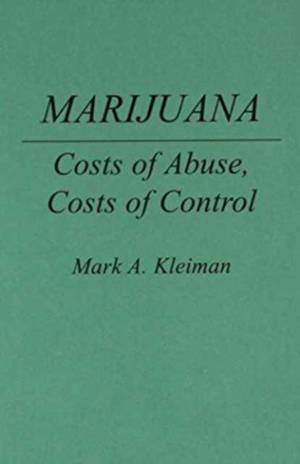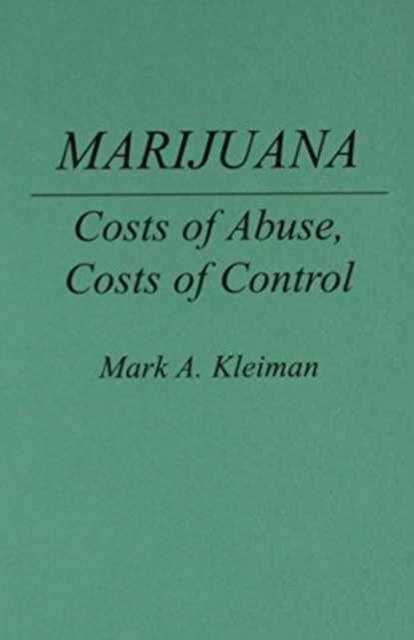
- Retrait gratuit dans votre magasin Club
- 7.000.000 titres dans notre catalogue
- Payer en toute sécurité
- Toujours un magasin près de chez vous
- Retrait gratuit dans votre magasin Club
- 7.000.0000 titres dans notre catalogue
- Payer en toute sécurité
- Toujours un magasin près de chez vous
Description
A timely, tightly reasoned, thought-provoking examination of ways to select policies for the enforcement of federal marijuana drug laws. Choice Mark Kleiman has written a thorough . . . analysis of federal law enforcement policy options regarding marijuana. The genesis of this work began when he worked as a policy analyst with the U.S. Department of Justice. . . . Kleiman presents a number of major arguments against increased federal enforcement of laws prohibiting marijuana, including that it would: (1) increase the use of other drugs such as PCP and alcohol, (2) increase drug dealing and theft among adolescent users, and (3) increase the involvement of organized crime in the illicit distribution and sale of marijuana due to the attraction of greater profits. Regarding this last item, he argues that as enforcement efforts increase it gives people with a propensity for using violence and corruption a competitive advantage in the marijuana trade. Because Kleiman argues for a severe curtailment of federal law enforcement efforts against marijuana, it will stimulate the debate about the role of federal law with regard to marijuana. Journal of Contemporary Criminal Justice
How, and how vigorously, should U.S. federal law enforcement agencies enforce the laws against dealing in marijuana? This book assesses alternative ways of enforcing marijuana laws at the federal level. Marijuana grew out of work begun by Kleiman in 1981-1982 when, as a drug policy analyst for the Department of Justice, he was trying to calculate how an increase in enforcement resources would serve the twin goals of reducing drug abuse and limiting the power and wealth of large criminal organizations. This volume reproduces that analysis, using newer data, and compares results up to 1985-1986 with expectations. It is intended not to second-guess what was done, but to suggest how such choices ought to be made in the future.
Kleiman divides his analysis into three parts. First, he identifies what is at stake in marijuana consumption and dealing, estimates the size of the problem, and discusses the criteria to be used in judging a policy recommendation. The second part is devoted to developing a theory of drug dealing and its response to varying levels of enforcement pressure. The remainder of the book applies that theory to the real world and discusses the policy options available now. Kleiman's conclusions are pessimistic about the ability of federal enforcement to influence marijuana consumption. His analysis supports both a reduction in federal marijuana enforcement efforts and a redirection towards the most violent dealing groups. As a study of a critical problem in contemporary American society and as a work of policy analysis, Marijuana will be challenging reading for political scientists, economists, policy analysts, and members of those agencies dealing with drug law enforcement. The serious general reader also will find it thought provoking.
Spécifications
Parties prenantes
- Auteur(s) :
- Editeur:
Contenu
- Nombre de pages :
- 217
- Langue:
- Anglais
- Collection :
- Tome:
- n° 22
Caractéristiques
- EAN:
- 9780313258534
- Date de parution :
- 26-06-89
- Format:
- Livre relié
- Format numérique:
- Genaaid
- Dimensions :
- 156 mm x 235 mm
- Poids :
- 453 g

Les avis
Nous publions uniquement les avis qui respectent les conditions requises. Consultez nos conditions pour les avis.






